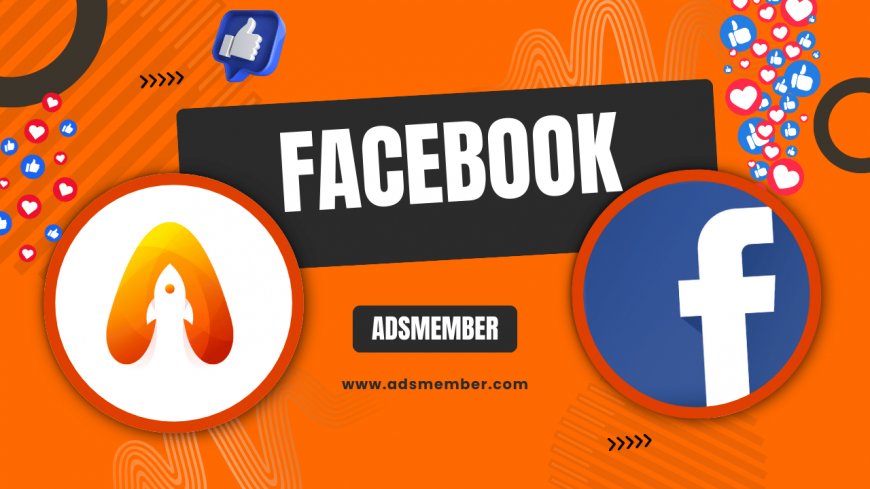How to Deactivate Facebook: A Step-by-Step Guide
Learn how to deactivate Facebook with this easy step-by-step guide. Temporarily step away from social media, protect your privacy, and understand the…

Let’s be honest—sometimes, Facebook can feel like a vortex of endless scrolling, drama, and privacy concerns. If you’re itching for a break or just want to reclaim some mental space, knowing how to deactivate Facebook is a game-changer. It’s a temporary way to step back without losing your data, unlike permanent deletion. In my opinion, it’s the perfect middle ground for those of us on the fence. Stick with me as I walk you through the process and share some unique insights.
Why Deactivate Facebook? Understanding the Benefits
Deactivating your Facebook account is like hitting the pause button. Your profile disappears from public view, your posts vanish temporarily, and no one can tag or message you. Honestly, it’s a relief when you’re overwhelmed by notifications or just need a digital detox. According to a 2022 Pew Research study, 64% of Americans have taken breaks from social media for mental health reasons (Pew Research). Deactivation offers that breather without the finality of deletion.
Beyond mental clarity, it’s also a privacy win. Your data isn’t accessible to others during deactivation, though Facebook still retains it internally. I’ve found this especially useful when dodging awkward friend requests or unsolicited messages. It’s not a full escape from Meta’s ecosystem, but it’s a start. Curious about other privacy tips? Check out our Facebook Privacy Guides.
What Happens When You Deactivate?
When you deactivate, your timeline, photos, and posts are hidden from everyone, including friends. You’re essentially invisible on the platform. However, some data—like messages you’ve sent—remains visible to others in their inboxes. I’ve had friends freak out thinking they’ve been blocked, so a quick heads-up to close contacts can save drama.
Also, if you use Facebook to log into other apps (like Spotify), deactivation might disrupt those connections. Keep a backup login method handy. It’s a small step, but trust me, it saves headaches. Facebook will hold your data until you reactivate, which can be done anytime by simply logging back in.
Step-by-Step: How to Deactivate Facebook on Any Device
Ready to pull the plug temporarily? Deactivating Facebook is surprisingly straightforward, whether you’re on mobile or desktop. I’ve done this a few times myself, and I’ll break it down with clear steps. The process is nearly identical across platforms, but I’ll note any quirks. Let’s dive in and get you off the grid in minutes.
Deactivating on Desktop
- Log into your Facebook account and click your profile picture in the top right.
- Select Settings & Privacy, then click Settings.
- Navigate to Privacy, then find Your Facebook Information on the left sidebar.
- Click Deactivation and Deletion, choose Deactivate Account, and follow the prompts.
- Confirm your password and select a reason for leaving (optional), then hit Deactivate.
That’s it! Your account is now hidden. I’ve noticed the interface can shift slightly with updates, so if you’re stuck, the Facebook Help Center is a lifesaver. One tip: screenshot your settings page before deactivating in case you need to troubleshoot later.
Deactivating on Mobile App
- Open the Facebook app and tap the three-line menu (hamburger icon) in the bottom right (iOS) or top right (Android).
- Scroll to Settings & Privacy, then tap Settings.
- Under Account, select Personal and Account Information.
- Tap Account Ownership and Control, then choose Deactivation and Deletion.
- Select Deactivate Account, enter your password, and confirm.
The mobile process mirrors desktop but feels more cramped on smaller screens. I’ve accidentally tapped the wrong option before, so take your time. If the app glitches, switch to a browser. Pro tip: clear your app cache post-deactivation to avoid residual notifications popping up.
Case Study: A Friend’s Journey with Deactivation
Let me share a real-world example that hit close to home. My friend Sarah, a small business owner, relied on Facebook for marketing but felt drained by constant engagement. She decided to deactivate for a month to focus on offline strategies. The result? Her stress dropped, and she returned with a fresh content plan that boosted her page likes by 20%.
What I found fascinating was her prep work. Before deactivating, Sarah downloaded her data (photos, posts, everything) via Facebook’s export tool under Your Facebook Information. She also notified clients through other channels. Her analysis post-return showed that her absence created curiosity among followers—proof that a break can be strategic. In my opinion, her story shows deactivation isn’t just personal; it can be a business move too.
Deactivation vs. Deletion: Key Differences
Deactivation is temporary; deletion is forever. When you deactivate, you can return anytime—your data waits. Deletion wipes everything after a 30-day grace period, and there’s no going back. I’ve seen people regret deletion because they lost years of memories, so think hard before choosing.
Here’s a quick comparison based on official Facebook policies and user data from Statista (Statista):
| Feature | Deactivation | Deletion |
|---|---|---|
| Profile Visibility | Hidden | Permanently Removed |
| Data Retention | Stored by Facebook | Deleted after 30 days |
| Reactivation | Possible anytime | Not possible |
| User Impact (2023 Statista) | 10% of users deactivate yearly | 3% opt for deletion |
This table highlights why deactivation often feels safer. I’ve always leaned toward it because losing digital memories stings. If you’re torn, start with deactivation and see how it feels. You can always escalate to deletion later if needed.
FAQs on How to Deactivate Facebook
Can I Reactivate My Facebook Account After Deactivation?
Absolutely! Just log back in with your email and password, and your account springs back to life. Everything—friends, posts, photos—reappears as if nothing happened. I’ve done this after a two-week break, and it was seamless. Just don’t forget your login details, or you’ll need to reset them.
Will My Friends Know I’ve Deactivated My Account?
No, Facebook doesn’t notify anyone when you deactivate. Your profile simply vanishes from their view, and they can’t search for you. Some might notice if they try messaging you and get no response. I usually tell close friends beforehand to avoid confusion—it’s a courteous move.
What Happens to My Messenger Account During Deactivation?
Here’s a quirk: deactivating Facebook doesn’t automatically deactivate Messenger. You can still chat if the app is active, which surprised me at first. If you want a full break, deactivate Messenger separately via its settings or uninstall it. Check our Messenger Tips for more details on managing this.
What's Your Reaction?
 Like
0
Like
0
 Dislike
0
Dislike
0
 Love
0
Love
0
 Funny
0
Funny
0
 Angry
0
Angry
0
 Sad
0
Sad
0
 Wow
0
Wow
0



















































